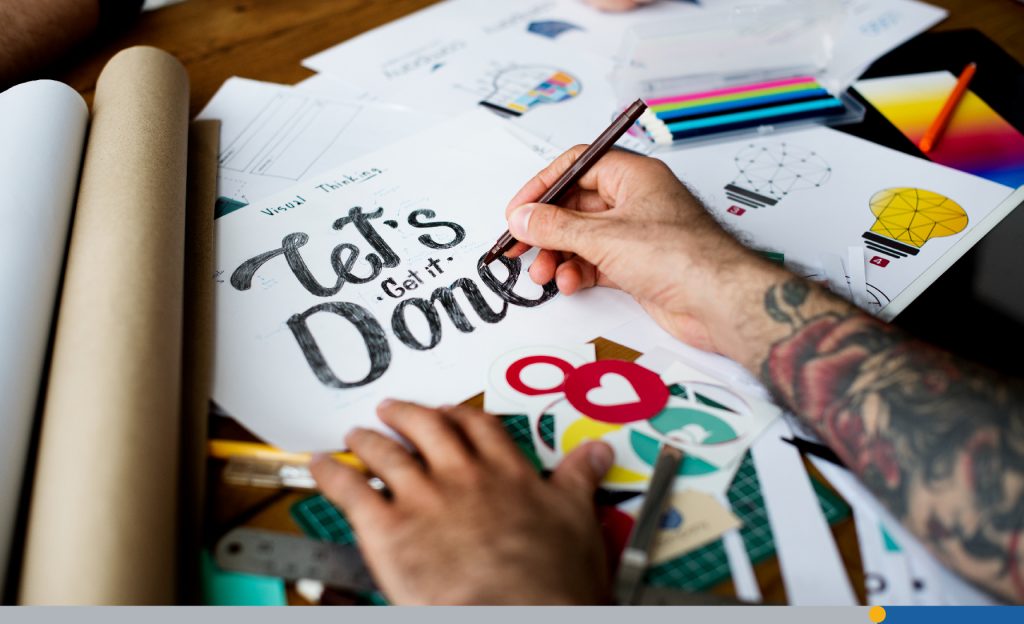Choosing the right brand logo for your new business is all about making a memorable impression that connects with your audience in a snap. Think of your logo as your business’s face. Whether you’re in tech or selling consumer goods, your logo should capture what your industry and brand are all about.
In this guide, we’ll dive into how to pick the perfect logo for your business, based on your industry, to help your brand stand out for all the right reasons.
Know What a Logo Does to Your Branding
At this stage, you might already have a business name or a business website up and running. Now you want to try and get your small business to the forefront but you don’t know where to begin.
FreeLogoServices is able to help you with its online Logo Maker solution, but it can also help you launch your business website in a matter of hours! FreeLogoServices Website Builder has it all, and it makes kickstarting your own business affordable.
The first step is to start with a compelling business name. Then, make sure you know what the logo brings to your branding. You want to know how to use it to be more successful in your niche. If you lack the skills to do this, you can explore the idea of hiring an experienced designer. A professional designer will be able to create a unique logo that effectively represents your brand’s identity.
Here are two key elements a logo contains:
- Emotional & psychological connection: A logo does more than just identify your business. It taps into emotions and builds a connection with your customers. When people see your logo, they should instantly get what your company is about and how it makes them feel. From trust to excitement, your logo conveys these feelings without saying a word.
- Communicates with potential customers: Your logo is like a silent ambassador for your business. It tells the story of who you are, your mission, and the promises you make to your customers. A well-designed logo says a lot about your professionalism and commitment, even before someone checks out your product or service.

Basic Logo Design Principles
With that said, there’s definitely room to learn more. A great logo is crucial for brand recognition and trust. So, let’s take a look at the basic design principles that go into a logo.
Simplicity & Versatility
The best logos are often the simplest. Creating a custom logo is now easier and faster than ever with various user-friendly logo makers. Think of logos like Apple or Nike—clean, straightforward, and instantly recognizable. A simple design can be adapted across different mediums, from digital platforms to physical products, without losing its essence.
Color Psychology
Colors play a huge role in logo design, especially when it comes to different industries, and color psychology is an enormous chapter of knowledge in the hands of logo designers. It is crucial to ensure that a logo conveys the right message through its shapes and colors. For example:
- Red conveys excitement and urgency, and is often used in the food and retail industry.
- Blue suggests trust and reliability, which are perfect for financial services and healthcare.
- Green is associated with nature and sustainability, making it a popular choice for the energy industry.
Logo Typography
Playing around with different styles of fonts in your logo designs is highly recommended to find the right one. The availability of customizable logo templates helps users to match their different business needs and personal styles to their logos. It also makes it easier to create unique logos that reflect your brand’s identity. Try experimenting with various typographic elements to bring a unique and memorable character to your brand’s visual identity.
However, you must know that not all fonts are suited for all purposes or industries. Each font carries its own set of connotations and emotional impact, which can significantly influence how your audience perceives your brand.
For instance, a playful, whimsical, font might be perfect for a children’s toy brand, yet entirely inappropriate for a law firm or financial institution seeking to convey professionalism and reliability.
Where Logos Are Displayed
Another important tip we would like to give you is understanding the significance of logo placement and positioning. A new logo serves as the face of your business and is an essential element for starting a new venture. The way you display your logo can greatly impact its effectiveness and the overall perception of your brand. You can’t just slap the logo onto everything; you must find the appropriate places.
Finding exciting and creative ways to incorporate your logo into specific content can make a substantial difference.
You might embed your logo subtly into the background of a video, or position it prominently on the header of a webpage. Each piece of content provides a unique opportunity to showcase your logo in a manner that is both visually appealing and contextually relevant.

How the Industry You’re in Influences Logo Design
Each industry has unique branding requirements that should be reflected in its logo design. A professional logo is critical in establishing a business’s identity, making it easier for consumers to recognize and interpret the brand. A logo for a tech company, for instance, would differ greatly from that of a construction business. Let’s explore some specific industries and how their logos work.
Here’s a look at how different industries leverage design elements to make a statement:
Automotive: The logos in the automotive industry showcase strength, speed, and precision—essential pillars of automaker companies.
Bold designs and powerful imagery, like Mercedes-Benz’s silver star or Ferrari’s prancing horse, exude luxury, performance, and engineering prowess.
Construction & Heavy Industry: Strength and expertise are front and center in this sector. Bold, sturdy designs, often featuring dark colors and sharp angles, convey durability and precision.
Caterpillar and John Deere’s logos exemplify this, using powerful imagery to inspire confidence in their machinery.
Energy: As the world shifts towards sustainability, energy industry logos are following suit. Greener tones, leaves, and sun imagery are increasingly common, reflecting a commitment to eco-friendly practices.
Tesla and BP’s logos exemplify this shift, highlighting innovation and renewable energy solutions. Other companies, like Shell, have their own mindsets; however, they still use green tones to indicate the practice of fuel-saving when it comes to gasoline.
Financial Services: Trust and stability are crucial in finance. Classic fonts, symmetrical shapes, and the color blue dominate, conveying a sense of reliability and security.
Simplicity is key, as seen in the logos of Visa and Goldman Sachs, reflecting professionalism and confidence.

Food & Beverage: Logos in this industry aim to whet the appetite. Warm colors like red and yellow stimulate hunger, while designs often incorporate fresh ingredients or imagery that evokes feelings of comfort and satisfaction.
McDonald’s golden arches and Coca-Cola’s classic script are prime examples.
Healthcare: Calmness, trust, and compassion are essential in healthcare. Blue and white dominate, representing cleanliness and professionalism.
Simple designs and recognizable symbols, like the cross in Blue Cross Blue Shield’s logo, inspire confidence and peace of mind.
Logistics: Speed, efficiency, and reliability are paramount in logistics. Arrows, curves, and bold fonts communicate movement and dependability.
FedEx’s subtle arrow (between the letters ‘e’ and ‘x’) and DHL’s slanted lines perfectly encapsulate these values.
Retail: Versatility is key for retail logos, as they appear across various platforms, so they need to stay competitive in a large playfield. Bright, bold colors attract attention and encourage purchases, while simple designs ensure memorability.
Walmart and Target’s logos demonstrate this, appealing to a broad audience with their recognizable color schemes and straightforward imagery.
Technology: The tech world embraces minimalism in its design, highlighting a focus on innovation and continuous progress.
Clean lines, geometric shapes, and futuristic fonts dominate, as seen in the sleek logos of Google, Microsoft, and Apple. These designs project a sense of modernity and cutting-edge technology.
Telecommunications: Connection is key in the telecommunications industry. Logos often incorporate circles, lines, and the color blue to symbolize communication and technology.
AT&T’s globe and Verizon’s checkmark represent global reach and reliability, respectively.
Conclusion
A logo tailored to your industry effectively communicates your message and ensures memorability, so selecting the one that fits your sector better is a crucial choice that must be made early on in your business career.
No matter what your industry is—tech, healthcare, or retail—a good logo is key to your brand’s lasting image.
Design your free logo with FreeLogoServices Logo Maker! Create your logo, download it, or save it to buy later. It’s quick and straightforward. Learn more at FreeLogoServices.com.
Frequently Asked Questions – FAQ
Why is color so important in logo design?
Color influences how people feel about your brand. Different colors evoke different emotions and can affect a customer’s decision-making process.
How often should a business update its logo?
While there’s no set rule, businesses usually update their logos every 5—10 years to stay modern and relevant. Some companies in the digital space even update their logos every 3 years.
Can a logo be too simple?
Simplicity can be powerful, but it shouldn’t sacrifice meaning or uniqueness. Your logo should still stand out while being clean and versatile, but it should also mean something.
What makes a logo timeless?
A timeless logo is one that maintains relevance despite changing trends. It focuses on clear communication, simplicity, and universal appeal, which almost always lead to a timeless design.
Is it necessary to hire a professional designer for a logo?
It’s not. While DIY tools are available, a professional designer can ensure that your logo effectively communicates your brand’s message and stands the test of time. FreeLogoServices Logo Maker is the perfect place to start, but you can always work with a designer to get the ideal design.
What are vector files, and why are they essential for logos?
Vector files, such as EPS or SVG formats, allow logos to be resized without losing quality, which is crucial for printing and digital use.
How can I ensure my logo is legally protected?
Consider trademark registration to protect your logo from unauthorized use and infringement.
What should I consider when designing a logo for international markets?
Colors, symbols, and meanings can vary significantly across different cultures. Be mindful that cultural sensitivity and universal appeal are vital.
How can I evaluate if my logo design is effective?
Conducting surveys or focus groups can provide valuable feedback on how your logo is perceived and its impact on brand recognition.
What should I do if I’m not satisfied with my current logo?
Consider rebranding or refining your logo design based on feedback and changes in your business’s direction. FreeLogoServices Logo Maker is here to help while working with a designer is also a great option to explore.
Can a logo evolve over time without losing its identity?
Yes, through subtle updates and redesigns, a logo can evolve while maintaining its core elements and recognition value.
What role does a logo designer play in creating branding that ensures instant recognition among consumers?
A logo designer plays a vital role in creating branding that ensures instant recognition among consumers. They focus on developing distinctive and memorable logos that effectively communicate desired brand qualities. The shape and color of a logo, crafted by a skilled logo designer, significantly influence brand perception and help in establishing a strong brand identity.


